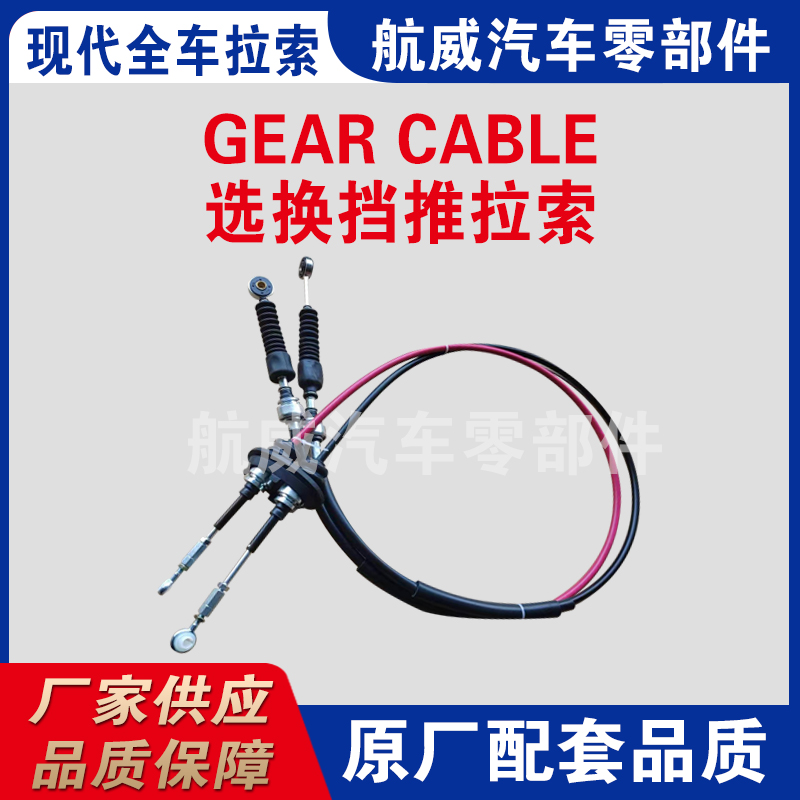Looking for a Gear Cable that Shifts Smoother & Lasts?
Shift Selector Cable: real-world notes from the shop floor
If you’ve ever wondered why a car slips crisply into the next gear one day and feels vague the next, you’ve met the unsung hero—the gear cable. I’ve seen fleets live or die by this part. The latest Shift Selector Cable coming out of Qinghe County (Minjiang Street south, Wuzhishan Road east) is the one I’ve been testing on city cabs and a rather grumpy off‑road ute. Spoiler: it’s smoother than you expect and oddly satisfying.

What’s trending in shift control
Two big shifts (no pun): lower friction liners and tighter backlash targets. Automakers want the crisp detent feel, and suppliers are answering with PTFE-lined conduits, SUS304 or high‑tensile galvanized cores, and better end fittings. Electrification isn’t killing mechanical gear cable demand either—hybrids still need robust mechanisms for park/shift lockouts and secondary controls. Customization is now table stakes.
Why this Shift Selector Cable stands out
- Feel and precision: low-friction PTFE liner reduces stiction; detent feel is clean, even in winter mornings.
- Durability: real-world life ≈ 150,000–200,000 km; lab cycling topped 220,000 cycles at mixed temperatures.
- Corrosion resistance: salt-spray endurance ≥ 480 h (ASTM B117) on plated fittings; conduit shows minimal surface bloom.
- Noise: reduced NVH “twang” versus older Bowden styles; many customers say shift noise basically disappears after break‑in.
Product snapshot
| Parameter | Spec (≈, real-world may vary) |
|---|---|
| Core wire | SUS304 or high‑tensile galvanized steel strand |
| Liner | PTFE low-friction tube |
| Conduit | Steel wound with PE/PVC jacketing |
| Outer diameter | 6.5–8.0 mm (custom) |
| Effective stroke | 50–120 mm typical |
| Operating temp | −40°C to +120°C (peaks to 140°C short‑term) |
| Pull force | |
| Backlash | |
| Service life | 8–10 years / 150k km typical |
| End fittings | Ball stud, clevis, barrel, custom quick‑fit |
Process flow, testing and certifications
Materials → multi‑strand forming → PTFE lining → conduit winding → jacketing → end fitting crimping → preload & lubrication → 100% functional pull test → endurance cycling. Validation includes ASTM B117 salt fog, ISO 16750 thermal/vibration profiles, tensile checks, and backlash mapping across temperature. Facility runs under IATF 16949 and ISO 9001. To be honest, the tidy traceability down to coil batches is what impressed me.
Gear cable failure modes we watch: corrosion creep at crimps, liner wear leading to stick-slip, and bracket misalignment—most are mitigated by tighter end‑fitting geometry and better plating.

Where it’s used
- Passenger vehicles: AT/AMT selector linkages, park lock cables
- Light commercial: vans and delivery trucks needing long routing
- Off‑road/UTV: sealed conduit spec for mud and washdowns
- Marine throttles/shift: corrosion‑focused variant on request
Vendor comparison (quick take)
| Vendor | Certs | Customization lead time | MOQ | Test scope | Price level |
|---|---|---|---|---|---|
| HWEI (Shift Selector Cable) | IATF 16949, ISO 9001 | 2–4 weeks for bracket/length changes | ≈ 200 pcs | ASTM B117, ISO 16750, cycle+pull | Mid |
| Vendor A (generic import) | ISO 9001 | 5–6 weeks | ≈ 500 pcs | Basic salt + pull | Low |
| Vendor B (premium EU) | IATF 16949 | 6–8 weeks | ≈ 100 pcs | Extended vibration/thermal | High |
Customization and case notes
Common tweaks: stroke length, bracket geometry, end‑fittings, conduit stiffness, and sealing boots. For a taxi fleet, a slightly stiffer conduit cut mis-shifts by ~18% over three months (driver feedback was… colorful but positive). On a desert rally pickup, a sealed gear cable spec with higher liner thickness survived 600 km of dust without binding.
Customer feedback, briefly
“Install took under an hour; shift feel is back to new,” says a workshop in Shenzhen. Another buyer mentioned initial pull force felt a tad higher out of the box, which settled after 30–50 shifts—pretty normal as the PTFE beds in, in my experience.
Authoritative citations:
- IATF 16949:2016 – Automotive Quality Management Systems
- ASTM B117 – Standard Practice for Operating Salt Spray (Fog) Apparatus
- ISO 16750 (parts 2–4) – Road vehicles — Environmental conditions and testing
- ISO 9001:2015 – Quality Management Systems Requirements
-
Clutch Line: Braided, Leak-Proof, OEM-Grade PerformanceNewsNov.10,2025
-
Throttle Cable: Durable, Smooth Control & Universal FitNewsNov.10,2025
-
Throttle Cable: Durable, Smooth, Universal Fit, Easy InstallNewsNov.10,2025
-
Clutch Line: Durable, Leak-Proof, OEM-Grade PerformanceNewsNov.10,2025
-
Hand Brake Cable | Custom, Universal & Trailer SolutionsNewsNov.10,2025
-
Clutch Line: High-Pressure, OEM-Fit, Corrosion-ResistantNewsNov.03,2025
